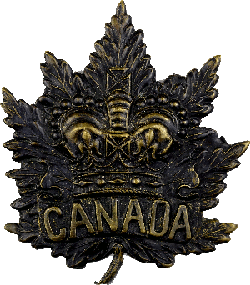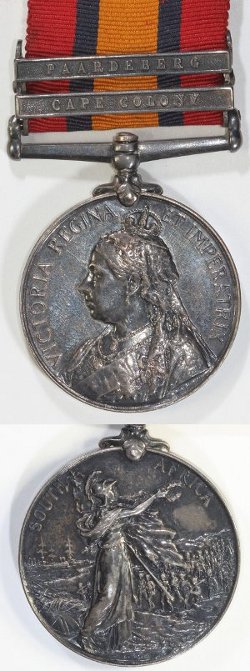The Seventh Fusiliers; 1895
Topic: The RCR
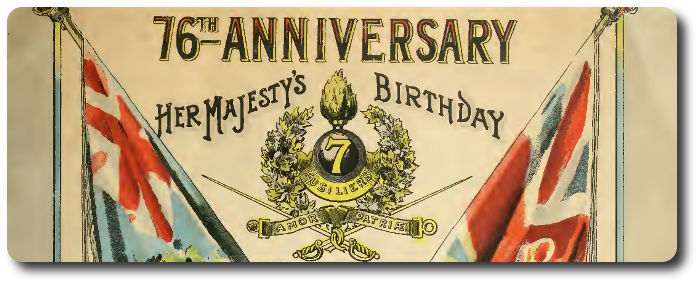
The Seventh Fusiliers; 1895
From the Programme of the 76th anniversary: Her Majesty's birthday, May 24th, 1895: grand military review at London, Ont. (1895). Digitized by the Internet Archive in 2009 with funding from Ontario Council of University Libraries
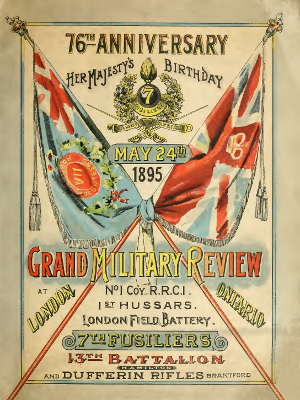 London, in 1855, boasted of but two volunteer companies—No. 1 Rifles, commanded by Capt. Hammond, and No. 2 Highland Rifles, commanded by Capt. (afterwards Brigade Major) Jas. Moffat. It was not until March 24th, 1865, that No. 3 Rifle company (Capt. C. F. Goodhue) was organized. In 1801-2 considerable excitement was caused throughout Canada over the Trent affair, and in no part of the country was greater enthusiasm exhibited than in London. A drill association, composed of prominent citizens, was formed and rapid progress made in the use of arms. From this sprang Infantry companies 1 and 2, organized Dec. 20th, 1862, and Jan. 25rd, 1863. The officers of the former were John B. Taylor, Andrew Cleghorn and Geo. S. Burns, and of No. 2 Hiram Chisholm, Archibald McPherson and Alex. M. Kirkland. These companies formed the nucleus from which sprang the Seventh or "Prince Arthur's Own," as it was first called. In the spring of 1866 a meeting of the officers was held in the old Drill Shed, and at that meeting the Seventh Battalion, London Light Infantry, was organized, Lieut-Col. John B. Taylor (then D.A.G. of the district) being placed in command.
London, in 1855, boasted of but two volunteer companies—No. 1 Rifles, commanded by Capt. Hammond, and No. 2 Highland Rifles, commanded by Capt. (afterwards Brigade Major) Jas. Moffat. It was not until March 24th, 1865, that No. 3 Rifle company (Capt. C. F. Goodhue) was organized. In 1801-2 considerable excitement was caused throughout Canada over the Trent affair, and in no part of the country was greater enthusiasm exhibited than in London. A drill association, composed of prominent citizens, was formed and rapid progress made in the use of arms. From this sprang Infantry companies 1 and 2, organized Dec. 20th, 1862, and Jan. 25rd, 1863. The officers of the former were John B. Taylor, Andrew Cleghorn and Geo. S. Burns, and of No. 2 Hiram Chisholm, Archibald McPherson and Alex. M. Kirkland. These companies formed the nucleus from which sprang the Seventh or "Prince Arthur's Own," as it was first called. In the spring of 1866 a meeting of the officers was held in the old Drill Shed, and at that meeting the Seventh Battalion, London Light Infantry, was organized, Lieut-Col. John B. Taylor (then D.A.G. of the district) being placed in command.
It may be interesting here to give the officers of the Battalion as found in the Militia List of 1877. It is as follows:—Lieut.-Col., John B. Taylor: Majors, Arch. McPherson, Robert Lewis; Paymaster, Duncan (now Judge) McMillan; Adjutant, Thomas Green; Quarter -Master, John B. Smyth; Assistant Surgeon, Richard Payne, M.D.
- No. 1 Co.— Capt. D.C. Macdonald. Lieutenant H, Gorman, Ensign W, H. Nash.
- No. 2 Co,— Capt. E.W. Griffith, Lieutenant Ed Mackenzie, Ensign A. W, Porte.
- No. 3 Co.— Capt. Thos. Millar, Lieutenant H. Bruce, Ensign W. McAdams.
- No. 4 Co,— Capt. W.R. Meredith (now Chief Justice), Lieutenant R.M. Meredith (now Vice-Chancellor), Ensign C.S. Corrigan.
- No. 5 Co, — Capt. M.D. Dawson, Lieutenant D.A. Hannah, Ensign Jas. Magee.
- No. 6 Co. —Capt. W.H. Code, Lieutenant Jas. A. Craig, Ensign Frank McIntosh.
- No. 7 Co.— Capt. John Macbeth, Lieutenant Emmanuel Teale. Ensign H.H. Coyne.
- No. 8 Co.— Capt. John Jackson, Lieutenant S. Kent, Ensign Thos. Elliott.
These were the officers at the time of the Fenian raid of 1866, when one or two companies were stationed at Windsor for over three months, and the whole Battalion was placed under active service at Fort Erie, At the latter point, although not coming under fire, they were subjected to trying forced marches and had to endure much fatigue. The members of that force (or the "Veterans of '66" as they are called) now resident in London are at present making preparations for their annual celebration to be held next month.
On the retirement of Col. Taylor from the command of the battalion, he was succeeded by Col. Robt. Lewis, The next commander was Col. John Macbeth then Col. John Walker; then Col. W. DeRay Williams then Col. Thos, H. Tracey then Col. Payne, and finally Col. Wm, Lindsay, It was while Col. Walker was at the head of the battalion that changed from "Seventh Batt., "Seventh Fusiliers."
On the honorary membership roll of the Seventh Battalion are found the names of many prominent men of Canada and citizens of London, many of whom have since died. Among them are Hon. J. Beverley Robinson, ex-Lieut. Governor of Ontario; the late Sir John Macdonald, Sir Adolphe Caron, Sir John Carling, Chief Justice Meredith, Hon. David Mills, the late James Armstrong, M.P., D. McKenzie, ex-M.P.P., the late Henry Becher, C.S. Hyman, Robt. Reid, the late Josiah Blackburn. Lieut. Col. W.H. Jackson, ex-D.A.G., Lieut-Col. Hon. M. Aylmer, ex-Brigade Major, Lieut.-Col. J. Shanly, Lieut.-Col. P. B. Leys, the late Col. Moffat, Lieut.-Col. John Peters, the late Lieut.-Col. John Cole, Lieut.-Col. Heskith, R.A., Lieut.-Col. Fisher, Major Fred. Peters, Surgeon-Major V.A. Brown, Captains Luard, John Williams and A.G. Smyth, Lieutenants Hesketh, Fairbanks and J.I.A. Hunt. and the following retired officers of the battalion: Lieut.-Cols. Taylor, Lewis, Macbeth, Walker, Dawson and Griffith; Majors A. McPherson, Thos. Miller and H. Gorman; Asst. Surgeon Payne; Captains D.C. Macdonald, H. Taylor, A. Cleghorn, G. S. Birrell, T.T. Macbeth, C.F. Goodhue, Thos. O'Brien, J. B. Elliott, F. McIntosh, A.W. Porte, Jas. Mahon, W. Carey, W. Hudson, H. Bruce; Lieutenants B. Cronyn, Geo. Burns, Jas. Magee, W.H. Nash, D. C. Hannah, R.M. (Justice) Meredith, C.B. Hunt, W. R. Elliott, Geo. Macbeth, Harry Long, F. Love, C. A. Stone and T.H. Brunton
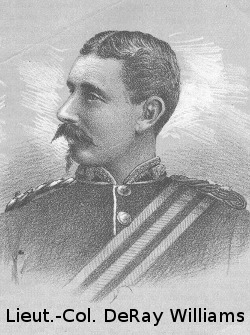 The second occasion upon which the battalion was summoned for active service was in 1885, to assist is suppressing the rebellion in the Northwest, in which a former Londoner, Mr. Elliot, son of His Honor Judge William Elliot, was cruely slain. The battalion left for the scene of trouble in the month of April. The staff comprised Lieut.-Col. W. DeRay Williams in command, Majors Smith and Gartshore, Adjutant Reid, Quartermaster Smyth and Surgeon Fiaser. The Captains were Ed. MacKenzie, Frank Butler, T.H. Tracey, Dillon and S.F. Peters; Lieutenants Bapty, Bazan, Chisholm, Gregg, Cox, Payne, Hesketh, Jones and Pope; Staff Sergeants—Sergt.-Major Byrne; Paymaster Sergt. Smith, Quarter-Master Sergt. Jury; Ambulance Sergt. Campbell; Sergeant of Pioneers, Cotter; Color-Sergt. A. Jackson; Sergeant James Beacroft; Corporal C.G. Armstrong; Privates Geo. Chapman, Ed. Harrison, A. Leslie, C. Pugh, H. Pennington, Geo. Rogers, W. Schabacker, C.F. Williams, W. Wright, F. Sadler, Langford. Color-Sergt. Thos. Goold; Sergeants McClintock, John Harris, Joseph O'Roake; Corporals A. E. Walker, W. Dyson and James Goold; Lance-Corporals Joseph Amor and Wm. Brown; Privates Hugh McRoberts, James Ford, H. Arbuckle, J.I. Walker, Jas. Johnston, J. F. Gray, H. Westaway, Patrick Neil, Chas. Potter, W.D. Crofts, A. Davis, A. McRoberts, Jas. Lozier, T. R. Hardwood, F. Young, Thos. Livesey, W. Beaver, W. Andrews, W. Ferguson, Geo. Davis, A. Somerville. Sergeants Anundson and Anglin; Corporal McDonald: Privates Wanless, Jones, Pennington, Fish, Burns, Atkinson, Dignan, Kidder, Burke, Hanson, McCoomb, Graham, Mercer, Kirkendale, Ryan, Caesar, Pettie, Wright, Smyth and J.A. Muirhead. Sergt. Borland; Corporals Richards, McDonald and Bayley; Privates Lister, Moore, Mills, Smith, McCarthy, Pennington Macbeth, Webbe, R. Smith, Lowe, McCormick, G. Westland, Benson, Cowan, Ironsides, Allen, Mitchell, Howard, Davis, Smith, Labatt, K P. Dignan, C.D. Gower, Carey, Gregg, Carnegie and W. Owen. Sergeants Jacobs, Summers and Neilson; Corporals Field, Rowland and Opled; Privates Jacobs, Tennant, Best, Dickinson, Walton, Martin, Johnson, Moriarty, Peden, Kenneally. Cassidy, Norfolk, Hayden, A. McNamara, Hall, Quick, W. Wright, Cowie, Appleyard, Richardson, Northey, Stinchcomb, Thwaite, Beetham, Walton, Sinnott, Rowason and McNamara. Sergt. Line; Privates H. Mills, T. Mills, Stanfild, Black, Collins, Copper, George Clark, Connell, Dankin, Flavin, Harrigan, Keenan, Land, Lally, Lovell, Morkin, Thomas Wright, Wilson, Brown, Crawford, W. Wright and J. Clark. Color-Sergeant Borland; Sergeants Lynch and Fuller; Corporals Harrison and Lyman; Privates B. Screaton, Allison, Barrell, Bigger, Borland, Brazier, Blackburn, Dickens, Duval, Essex, Hicks, Hood, Hutchison, McCutcheon, McCoy, McPherson, MacDonald, Parkinson, Piclkes, Pate, Robertson, Steele, W. Smith, Terry, Whittaker, and Woodall.
The second occasion upon which the battalion was summoned for active service was in 1885, to assist is suppressing the rebellion in the Northwest, in which a former Londoner, Mr. Elliot, son of His Honor Judge William Elliot, was cruely slain. The battalion left for the scene of trouble in the month of April. The staff comprised Lieut.-Col. W. DeRay Williams in command, Majors Smith and Gartshore, Adjutant Reid, Quartermaster Smyth and Surgeon Fiaser. The Captains were Ed. MacKenzie, Frank Butler, T.H. Tracey, Dillon and S.F. Peters; Lieutenants Bapty, Bazan, Chisholm, Gregg, Cox, Payne, Hesketh, Jones and Pope; Staff Sergeants—Sergt.-Major Byrne; Paymaster Sergt. Smith, Quarter-Master Sergt. Jury; Ambulance Sergt. Campbell; Sergeant of Pioneers, Cotter; Color-Sergt. A. Jackson; Sergeant James Beacroft; Corporal C.G. Armstrong; Privates Geo. Chapman, Ed. Harrison, A. Leslie, C. Pugh, H. Pennington, Geo. Rogers, W. Schabacker, C.F. Williams, W. Wright, F. Sadler, Langford. Color-Sergt. Thos. Goold; Sergeants McClintock, John Harris, Joseph O'Roake; Corporals A. E. Walker, W. Dyson and James Goold; Lance-Corporals Joseph Amor and Wm. Brown; Privates Hugh McRoberts, James Ford, H. Arbuckle, J.I. Walker, Jas. Johnston, J. F. Gray, H. Westaway, Patrick Neil, Chas. Potter, W.D. Crofts, A. Davis, A. McRoberts, Jas. Lozier, T. R. Hardwood, F. Young, Thos. Livesey, W. Beaver, W. Andrews, W. Ferguson, Geo. Davis, A. Somerville. Sergeants Anundson and Anglin; Corporal McDonald: Privates Wanless, Jones, Pennington, Fish, Burns, Atkinson, Dignan, Kidder, Burke, Hanson, McCoomb, Graham, Mercer, Kirkendale, Ryan, Caesar, Pettie, Wright, Smyth and J.A. Muirhead. Sergt. Borland; Corporals Richards, McDonald and Bayley; Privates Lister, Moore, Mills, Smith, McCarthy, Pennington Macbeth, Webbe, R. Smith, Lowe, McCormick, G. Westland, Benson, Cowan, Ironsides, Allen, Mitchell, Howard, Davis, Smith, Labatt, K P. Dignan, C.D. Gower, Carey, Gregg, Carnegie and W. Owen. Sergeants Jacobs, Summers and Neilson; Corporals Field, Rowland and Opled; Privates Jacobs, Tennant, Best, Dickinson, Walton, Martin, Johnson, Moriarty, Peden, Kenneally. Cassidy, Norfolk, Hayden, A. McNamara, Hall, Quick, W. Wright, Cowie, Appleyard, Richardson, Northey, Stinchcomb, Thwaite, Beetham, Walton, Sinnott, Rowason and McNamara. Sergt. Line; Privates H. Mills, T. Mills, Stanfild, Black, Collins, Copper, George Clark, Connell, Dankin, Flavin, Harrigan, Keenan, Land, Lally, Lovell, Morkin, Thomas Wright, Wilson, Brown, Crawford, W. Wright and J. Clark. Color-Sergeant Borland; Sergeants Lynch and Fuller; Corporals Harrison and Lyman; Privates B. Screaton, Allison, Barrell, Bigger, Borland, Brazier, Blackburn, Dickens, Duval, Essex, Hicks, Hood, Hutchison, McCutcheon, McCoy, McPherson, MacDonald, Parkinson, Piclkes, Pate, Robertson, Steele, W. Smith, Terry, Whittaker, and Woodall.
The departure of the "boys" for the scene of the trouble, amidst the cheers of thousands who lined the streets, and the sobs and tears of mothers, wives and sweethearts, will be The remembered by most citizens. The trying marches through the "gaps," and the hardships there endured in the late winter time, as well as the tiresome journey from the C.P.R. Line along the Saskatchewan River to Clark's Crossing with supplies, will ever be fresh in the memories of the noble fellows. True, they had no actual fighting, for there was none for them to do but they were there ready to carry out orders, and were fully prepared for a conflict should occasion for such arise. As it was, the services performed by the 7th Fusiliers in 1885 were fully as important to the Queen and country as those of any other corps engaged in the campaign.
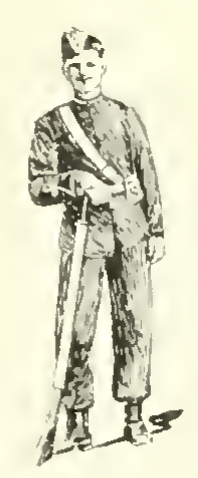 The battalion returned home after a service of about four months, and their arrival here was made the occasion of a great demonstration, which for heartiness has seldom been equalled. Along with other battalions the members of the Seventh were subsequently awarded silver medals by Her Majesty, of the possession of which they are justly proud.
The battalion returned home after a service of about four months, and their arrival here was made the occasion of a great demonstration, which for heartiness has seldom been equalled. Along with other battalions the members of the Seventh were subsequently awarded silver medals by Her Majesty, of the possession of which they are justly proud.
The Battalion is to-day in excellent hands. Of Colonel Lindsay it is no mere figure of speech to say that he is every inch a soldier. When he took hold, several months ago, it was with the intention of making the Battalion equal to the best in the Dominion, and there is every indication that he is succeeding in his self-imposed task to the fullest. He has surrounded himself with a capable staff. Majors Beattie and Hayes being tried and experienced officers, while the other officers are young gentlemen full of military enthusiasm and promise. The staff and officers are as follows—Lieut.-Col. Wm. Lindsay Majors Thomas Beattie and Geo. W. Hayes Captains Lewis H. Dawson, Henry A. Kingsmill, John Graham, Fred. J. Fitzgerald, James A. Thomas, John M. Moore: Lieutenants Oliver M. Denison, Wm. J. Taylor; Second Lieutenants Arthur Magee, Edward O. Graves, Wm. H. Allison Paymaster, His Honor Judge Duncan Macmillan; Acting Adjutant, Capt. H.A. Kingsmill; Quarter-Master, R.M. McElheran; Surgeon, Wm. J. Mitchell, M.D.; Assistant Surgeon, John Piper, M.D.
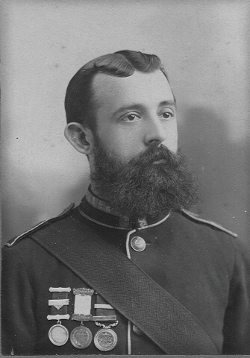 The Seventh Band has long enjoyed the reputation of being among the leading musical organizations in Canada. This reputation the officers have determined to maintain, and with that object in view they recently secured the services of Mr. Tresham, a gentleman of superior qualifications, as leader an instructor. That gentleman has recently reorganized the band, retaining the best of the old-time musicians and introducing considerable new blood, so that the prospects are that the Seventh Band will, before long, be better than ever.
The Seventh Band has long enjoyed the reputation of being among the leading musical organizations in Canada. This reputation the officers have determined to maintain, and with that object in view they recently secured the services of Mr. Tresham, a gentleman of superior qualifications, as leader an instructor. That gentleman has recently reorganized the band, retaining the best of the old-time musicians and introducing considerable new blood, so that the prospects are that the Seventh Band will, before long, be better than ever.
Two or three months ago the Officers of the Seventh rented the large hotel building at the corner of Princess Avenue and Richmond Street, and converted it into a regimental club house. On the ground floor is the mess rooms of the officers and non-coms., both of which have been sumptuously furnished and present a cosy and home-like appearance. The two upper stories are devoted entirely to the men, and are furnished with a beautiful piano, billiard, pool and card tables. The rooms are well lighted throughout. The reading room is kept furnished with good current literature, and it is the intention to shortly establish a reference and reading library. The club will add greatly to the interest taken by the members in the Regiment.
Col. Lindsay and officers of the Seventh certainly deserve the hearty sympathy of the citizens in their efforts to maintain a battalion that is a credit to the headquarters of No. 1 Military District
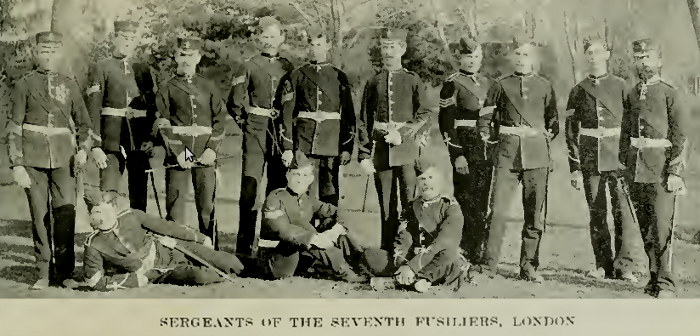

Posted by regimentalrogue
at 12:01 AM EDT

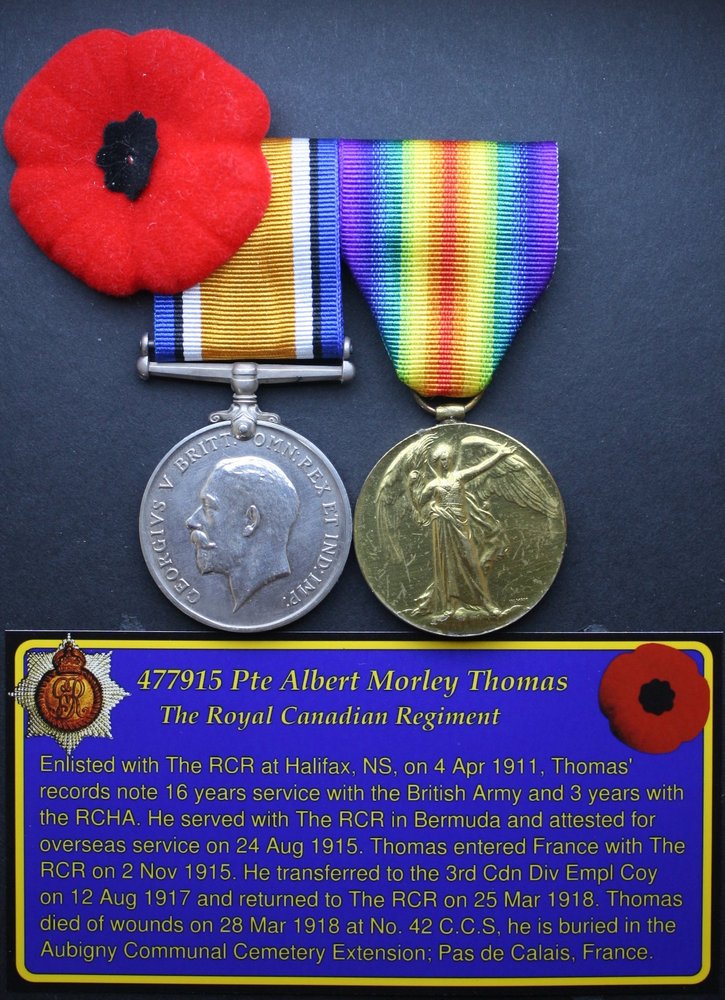



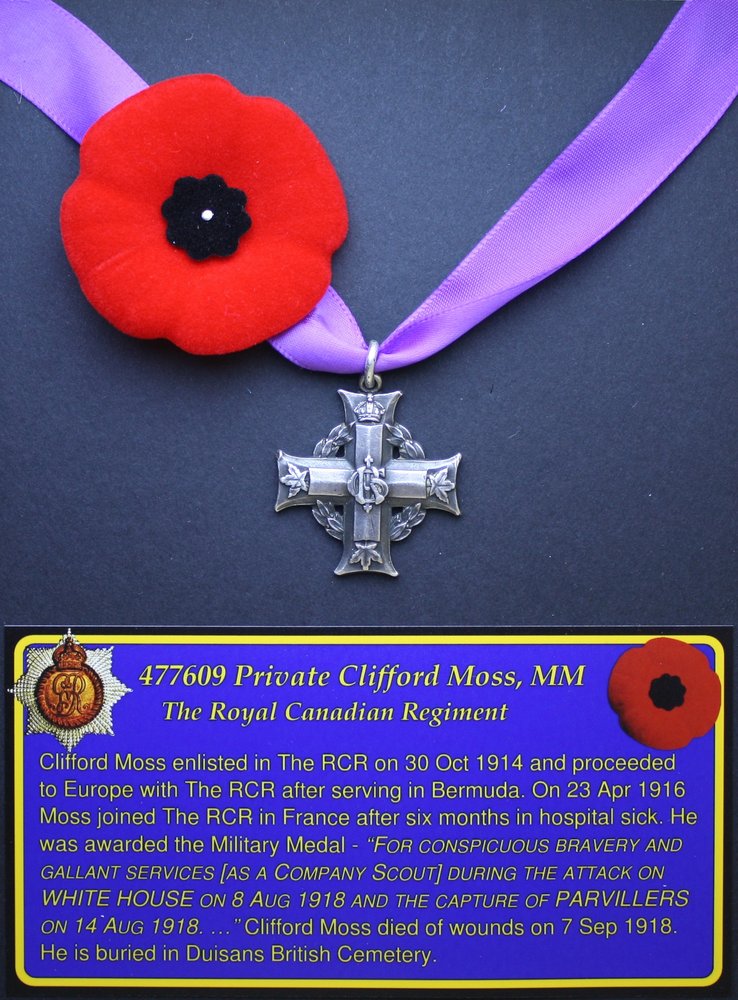

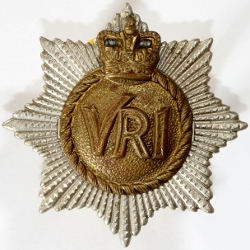 "Bones" is a nondescript mongrel of uncertain age and parentage who, years ago, adopted
"Bones" is a nondescript mongrel of uncertain age and parentage who, years ago, adopted 
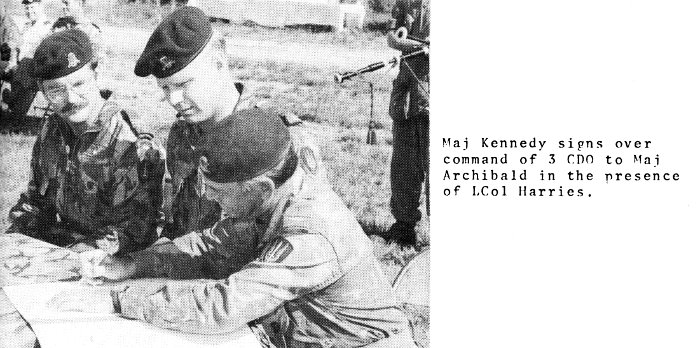
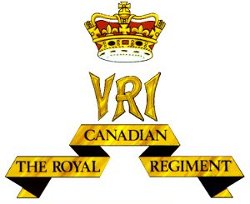
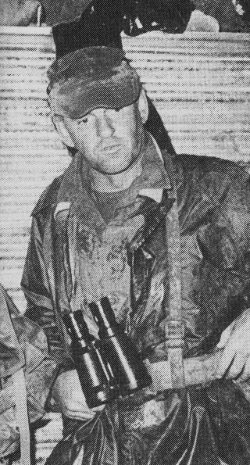
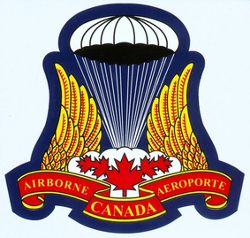



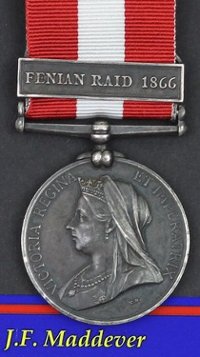
 The second occasion upon which the battalion was summoned for active service was in 1885, to assist is suppressing the
The second occasion upon which the battalion was summoned for active service was in 1885, to assist is suppressing the 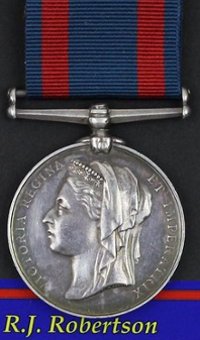
 The battalion returned home after a service of about four months, and their arrival here was made the occasion of a great demonstration, which for heartiness has seldom been equalled. Along with other battalions the members of the Seventh were subsequently awarded silver medals by Her Majesty, of the possession of which they are justly proud.
The battalion returned home after a service of about four months, and their arrival here was made the occasion of a great demonstration, which for heartiness has seldom been equalled. Along with other battalions the members of the Seventh were subsequently awarded silver medals by Her Majesty, of the possession of which they are justly proud.  The Seventh Band has long enjoyed the reputation of being among the leading musical organizations in Canada. This reputation the officers have determined to maintain, and with that object in view they recently secured the services of
The Seventh Band has long enjoyed the reputation of being among the leading musical organizations in Canada. This reputation the officers have determined to maintain, and with that object in view they recently secured the services of 
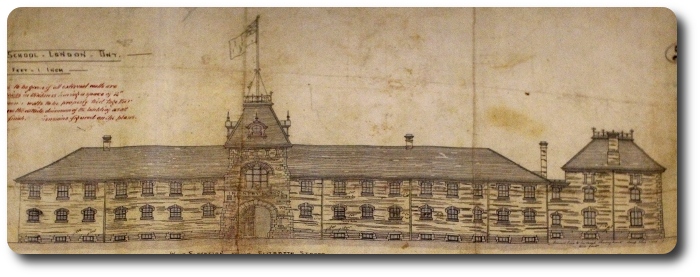
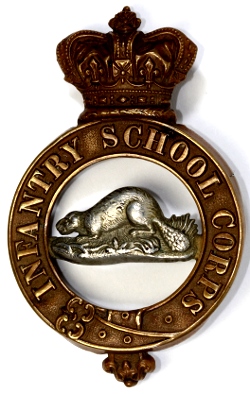 On Saturday afternoon a Free press reporter visited the
On Saturday afternoon a Free press reporter visited the 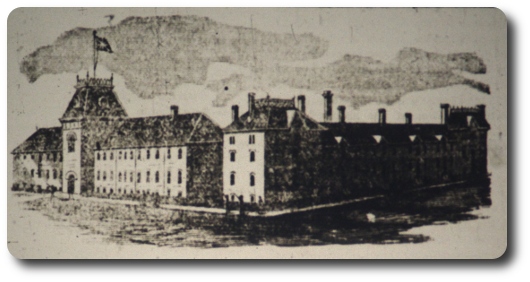
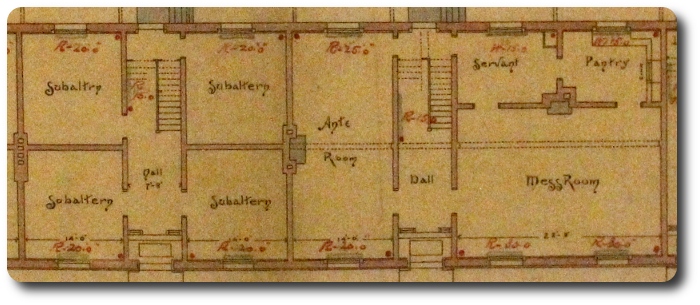
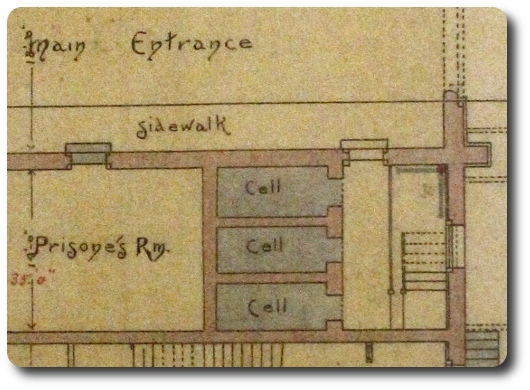
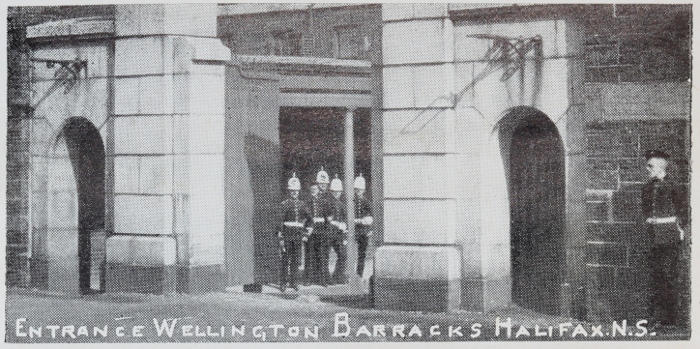
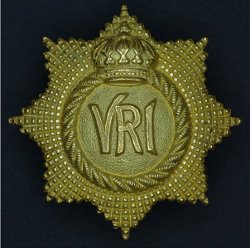
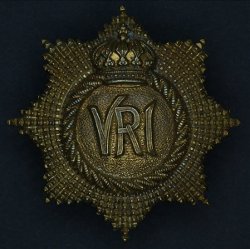
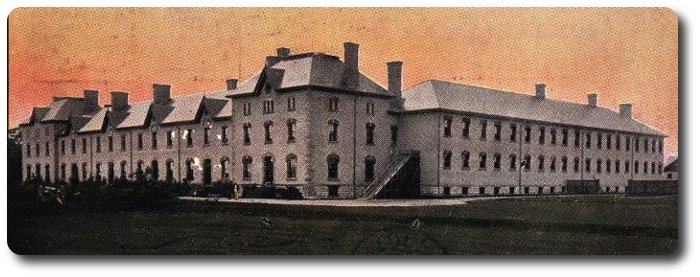

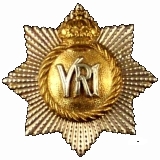
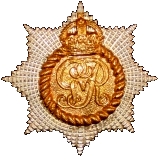
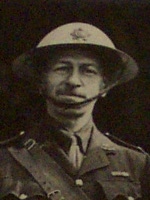
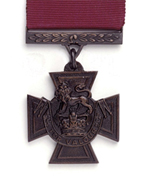
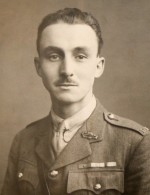
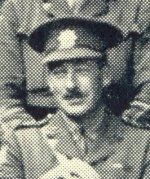
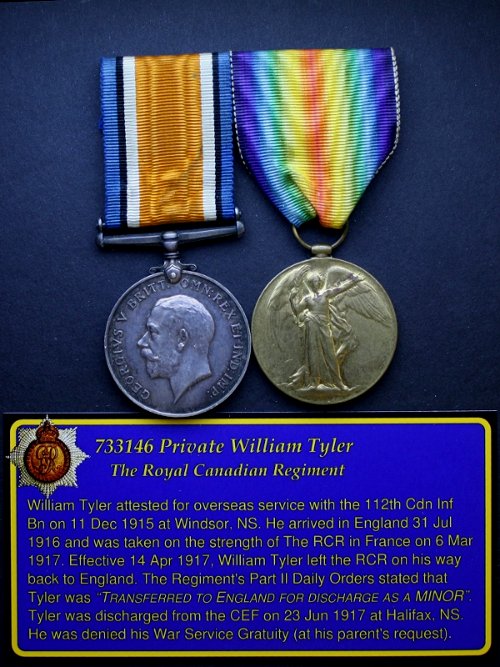
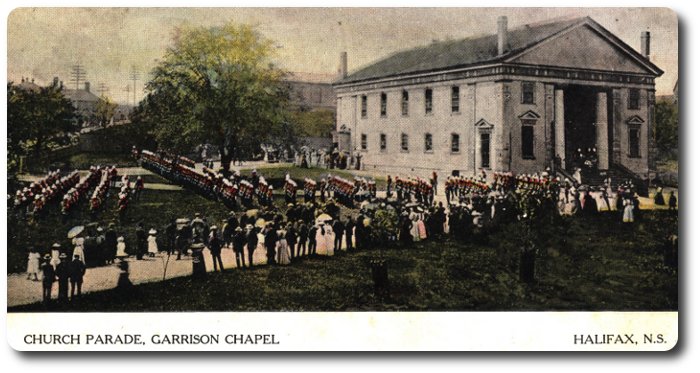

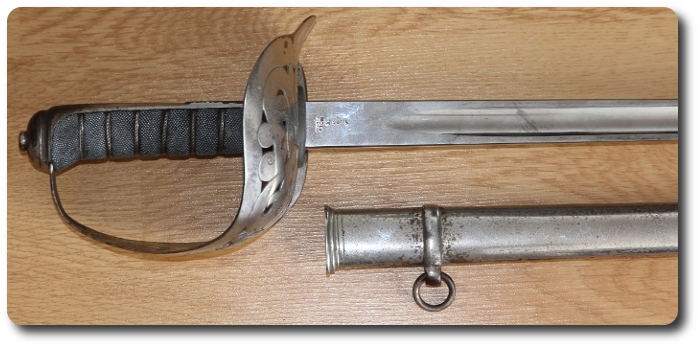
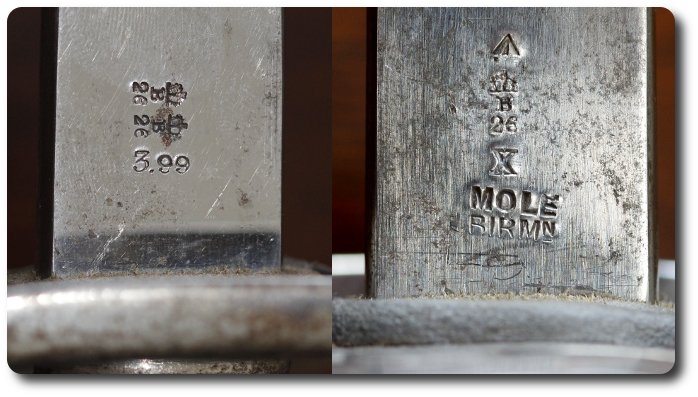

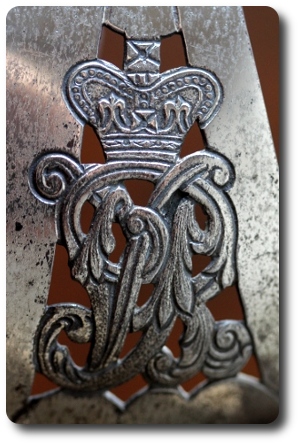 We can narrow the date of the sword to an even closer range than the years Mole manufactured swords. To start with, the most obvious indicator of period: the Royal Cypher. Marked with Queen Victoria's "VR" cypher certainly means this sword was produced no later than 1901.
We can narrow the date of the sword to an even closer range than the years Mole manufactured swords. To start with, the most obvious indicator of period: the Royal Cypher. Marked with Queen Victoria's "VR" cypher certainly means this sword was produced no later than 1901.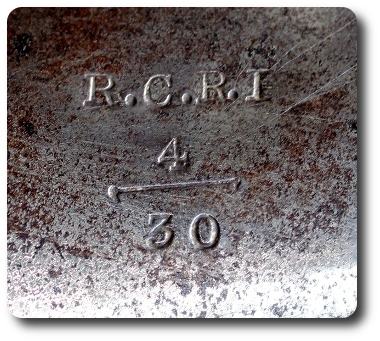 Of these, was one unit more likely to require a set of 30 new swords? The 2nd (Special Service) Battalion, heroes of
Of these, was one unit more likely to require a set of 30 new swords? The 2nd (Special Service) Battalion, heroes of 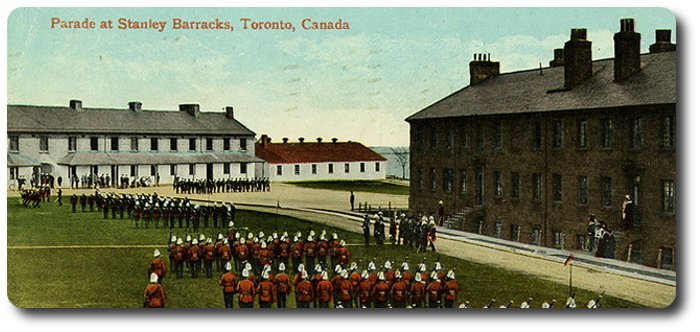
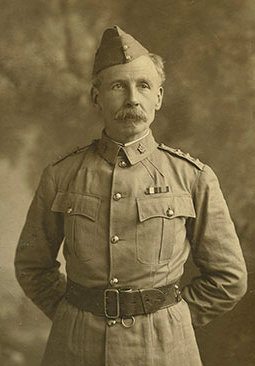


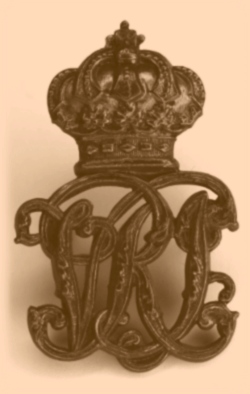 Sir.—In a somewhat bitter letter which appeared in your columns recently, Lieut.-Col. O'Brien, 35th Battalion, makes a strong attack on the
Sir.—In a somewhat bitter letter which appeared in your columns recently, Lieut.-Col. O'Brien, 35th Battalion, makes a strong attack on the 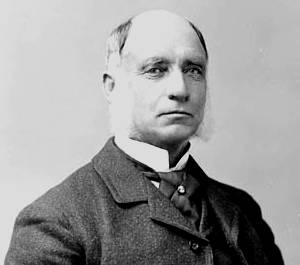 Lieut.-Col.
Lieut.-Col. 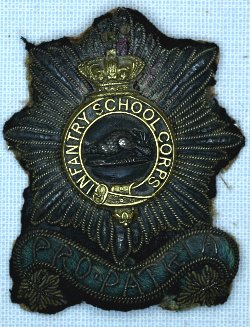
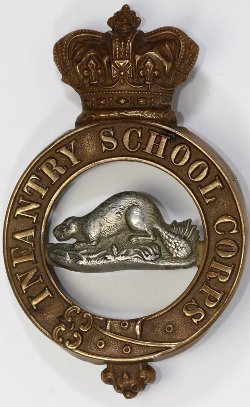
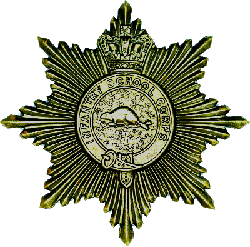
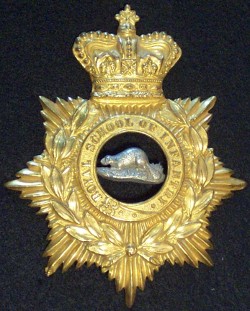

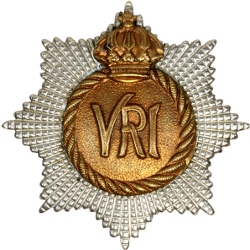

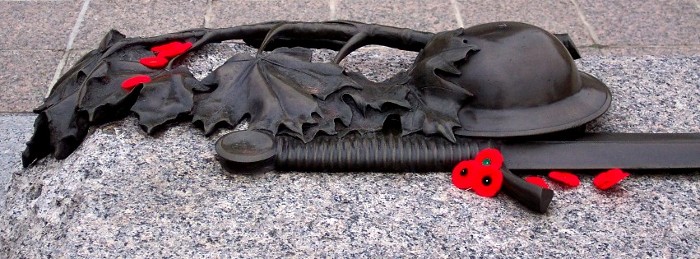
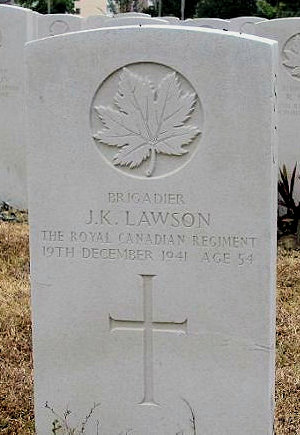 Allow me to describe one restrictive example. Within Volumes I and II of the regimental history of
Allow me to describe one restrictive example. Within Volumes I and II of the regimental history of 
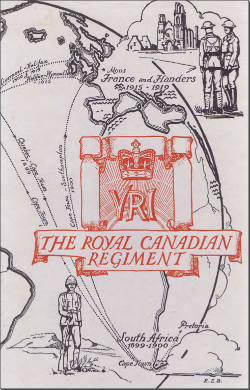 Not long ago, in my research on
Not long ago, in my research on 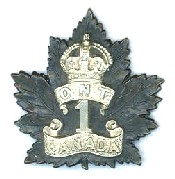 1st Canadian Infantry Battalion — about 6000 soldiers passed through the ranks of the
1st Canadian Infantry Battalion — about 6000 soldiers passed through the ranks of the 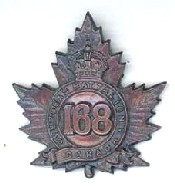 168th Canadian Infantry Battalion — The sailing list for the
168th Canadian Infantry Battalion — The sailing list for the 